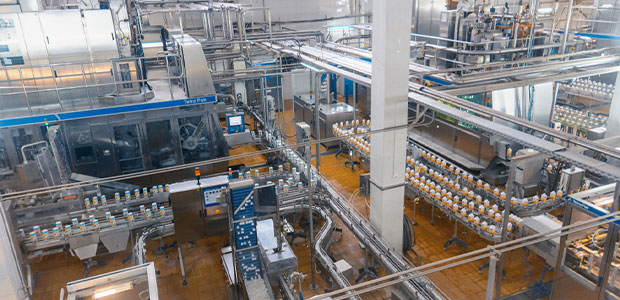
Here’s How Food Processors Can Reduce Water Use
- By Jane Marsh
- Dec 01, 2021
As eco-consumer rates grow, companies must find effective waste reduction methods, improving the sustainability of their manufacturing processes. Two of the most important industrial sectors are agriculture and food manufacturing. They support humanity’s needs, minimizing global starvation rates.
Current food development, packaging, and distribution methods contribute to adverse environmental effects. They utilize high quantities of freshwater, depleting the natural resource and increasing scarcity levels. Food processors can reduce water use and protect the earth’s ecology by following five conservation methods.
The Importance of Water Conservation
Before we evaluate the water reduction techniques, we must assess the importance of resource conservation. The agricultural industry accounts for nearly 69 percent of global water usage. Processing facilities use many millions of gallons of freshwater every day to meet consumers’ needs.
Only 2.5 percent of the planet contains available freshwater for consumption. When we over-extract natural resources, we throw off the global ecosystem’s balance. The enhanced greenhouse effect is also impacting the security of freshwater sources, creating additional conservation challenges.
Reducing the food processing sector’s water exploitation can increase global hydration rates. Today, about 884 million individuals lack access to safe drinking water. Dehydration can cause fatal health effects.
It also causes individuals to consume contaminated water sources, placing their health and well-being at risk. The food production industry uses a large quantity of freshwater for cleaning, storing, safety enhancement and more. It can improve water conservation efforts and protect humanity and the global ecosystem by installing green technology and updating facilities’ designs.
Install Low-Flow Fixtures
Companies can shrink their water footprints and increase their sustainability levels by installing low-flow fixtures. This technology restricts excessive resource consumption without compromising pressure. It pushes water through a fine screen, adding air to increase the force of the stream.
Food processors may significantly reduce their monthly water bills and ecological impacts by using water conservation fixtures. They can additionally shrink their water footprints by decreasing their reliance on the conventional city supply.
Add a Rainwater Harvesting System
When companies install rainwater harvesting systems, they can eliminate their exploitation of freshwater sources. The technology collects storm water in barrels, directly sending it to low-quality systems, like toilets or through a purification device. Food processors can use unfiltered water for irrigation needs and some agricultural practices.
Sophisticated rainwater harvesting systems move storm water through a purification device, removing contaminants and other impurities. Then, it pumps the non-potable source into faucets, hoses, cleaning machines and more. Repurposing storm water for food processing minimizes exploitation, improving the sustainability of the agricultural industry.
Rely on Recycled Water
Facility owners can additionally improve the sustainability of their business by sourcing recycled water. Environmentalists developed green technology, purifying wastewater for reuse. The system is significantly more eco-friendly compared to conventional water supplies.
It reduces resource exploitation and minimizes surface-level waste. Companies can access their water from reclamation plants, improving conservation efforts and enhancing the sustainability of their products.
Add a Water Monitor
Food processing facilities can also install water monitors to track and minimize waste. The technology regularly collects information from one’s water tank and machines, determining their average usage. They assess a system’s pressure, water quality and leaks.
Fix Leaks and Update Old Pipes
After evaluating the feedback from water monitors, individuals can improve the sustainability of their facilities by repairing broken pipes. The U.S. wastes nearly 10,000 gallons of water from leaks annually. Repairing damaged pipes and replacing outdated ones to prevent degradation can significantly shrink one’s water footprint.
Facility owners can benefit from reducing water loss, shrinking their monthly utility bills in the process. They can also increase their sales by marketing their food as water-conscious. Eco-consumers value sustainable products.
The Initial Steps
Food processors can reduce their water use today by scheduling an audit. When professionals assess the benefits and challenges of water systems, they can help individuals make efficiency-enhancing alterations. Facility managers may also start minimizing water loss by educating their employees about effective reduction techniques.
About the Author
Jane Marsh is an environmental writer. You can keep up with her work on her site Environment.co.